The people in Belgium didn’t like to see one of the greatest works of a famous Belgian artist leave the country in the late 1980s.
James Ensor (1860-1949) is one of the icons of Belgian art, a notion emphasized by the fact that his picture even decorated the 100 franc note before the euro was introduced in the early 21st century.
The Magnum Opus of the Symbolist artist had something to do with this. It’s one of the most stunning Symbolist paintings ever produced and had a major influence on future generations.
Let’s take a closer look at some of the most interesting facts about Christ’s Entry Into Brussels in 1889 by James Ensor, an incredible work of art.
1. It was completed when James Ensor was in his late twenties
James Ensor is considered to be one of the greatest Belgian artists in history. His style can be classified as Symbolist art due to the weird subject matter of his works.
The artist had a Belgian mother and an English father and left school at the age of 15 to pursue an artistic career. He studied at the Académie Royale des Beaux-Arts in Brussels between 1877 and 1880.
He was never going to become an academic painter because he focused on paintings that mocked society and that were heavily criticized when they were exhibited.
His mature works often feature masks, skeletons, and weird figures. This definitely includes Christ’s Entry Into Brussels in 1889, a painting he completed in 1888.

2. It’s a parody of Jesus’ triumphal entry into Jerusalem
Jesus’ Triumphal entry into Jerusalem is an important event in the life of Jesus Christ. It happened just a few days before the Last Supper and his subsequent arrest.

It’s the beginning of the final phase of his life, also known as the Passion of Christ. Many events during this period were important subjects in the history of art.
Unlike all religious paintings of Christ’s triumphal entry, Ensor’s painting is a parody of the Biblical event.
Hoards of people march through Brussels as if they are about to beak out of the canvas. Clowns, people wearing masks, and other absurd figures are greeted by the mayor of Brussels standing on an elevated green stand on the right.
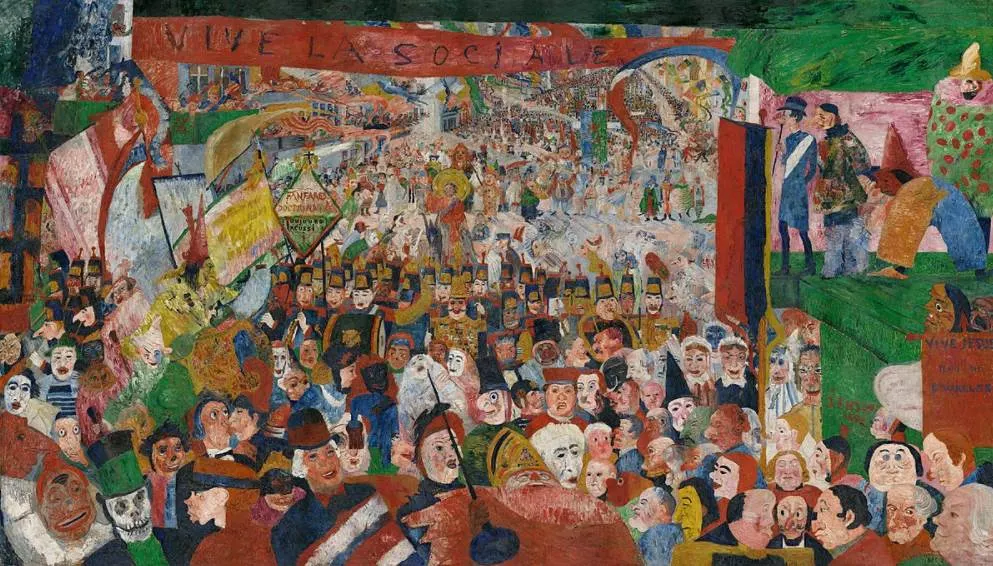
3. The painting is full of absurd figures who pay little attention to Christ
Christ appears in the center of the painting with a large yellow halo around his head, as is common in religious paintings.
The rather small figure of Christ rides a donkey and raises his hand in appreciation of the gathered crowd, only to realize that virtually nobody is paying attention to him.
Christ’s entry to Jerusalem on Palm Sunday has become a belittling event that takes place in Brussels. The carnivalesque nature of the parade turns the painting into a mockery of religion.
Ensor added an inscription on the utmost right side of the painting that reads “Vive Jesus Roi de Bruxlles” or “Long Live Jesus the King of Bruxxles” (Brussels being spelled incorrectly.
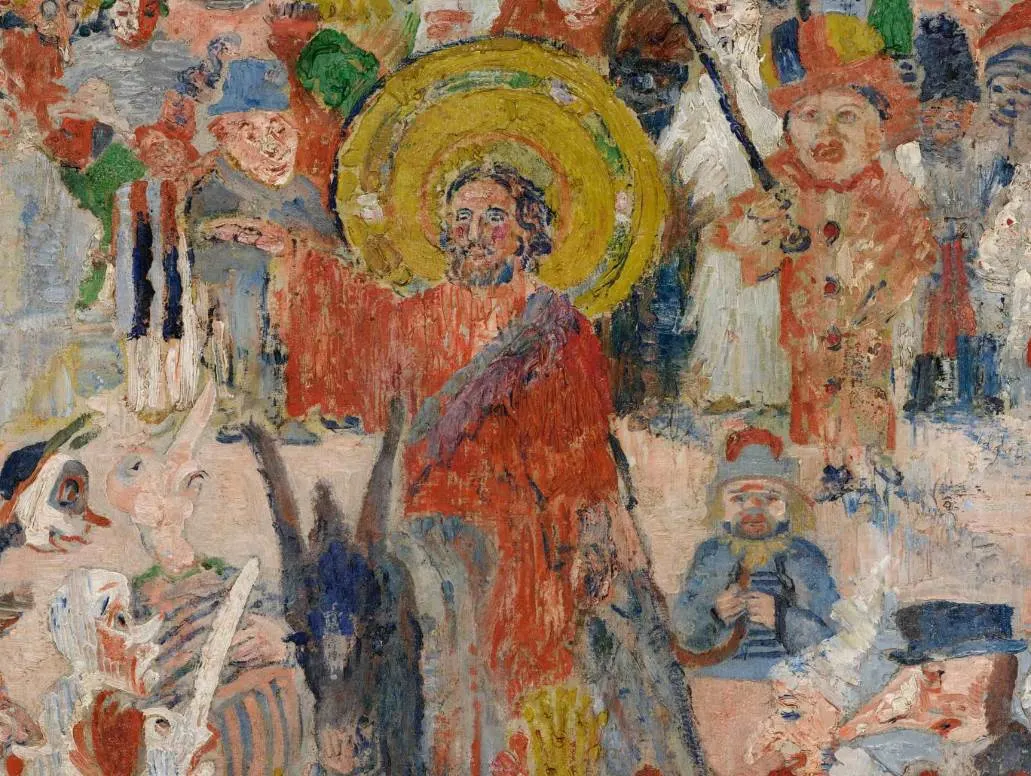
The large banner on top of the painting reads “Vive la Sociale,” a reference to the specialist movement that swept through Belgium during the 1880s.
It’s assumed that Ensor was inspired to paint this large crowd when he saw newspaper images of large demonstrations held in Brussels in 1886 in favor of improving the lives of working-class Belgians.
During this period in history, Jesus Christ played a major role for Socialist politicians. He was considered to be the best example of Social reforms.
This is the period in which when James Ensor painted his masterpiece which would have made it a significant work for contemporary viewers.

James Ensor was in favor of social reforms that benefited the impoverished conditions of the working class. His way of thinking was generally in line with that of Gustave Courbet in France.
He never made his opinion known as prominently as the Realism artist, except through his art.
This makes Christ’s Entry Into Brussels in 1889 an even more puzzling work of art because it doesn’t seem to be favorable for socialist politics.
It stays neutral by making a mockery of politicians, institutions, and religion, at an absurd level. The obese bishop leading the band at the bottom of the painting is a prime example of this.

6. It was rejected by the group that Ensor co-founded
James Ensor was one of the co-founders of an artistic group from Brussels called “Les XX.” It consisted of 20 artists who displayed their works at annual exhibitions.
The career shift of the Belgian artist happened around the time that he completed this painting. The political and religious subjects of his works were deemed too sensitive and Les XX rejected this work.
He eventually left the group in 1893 and held a lifelong grudge. He often ridiculed the group in his art as well.
He later added a figure to Christ’s Entry Into Brussels in 1889 in the top left corner which appears to be vomiting on the logo of the group.
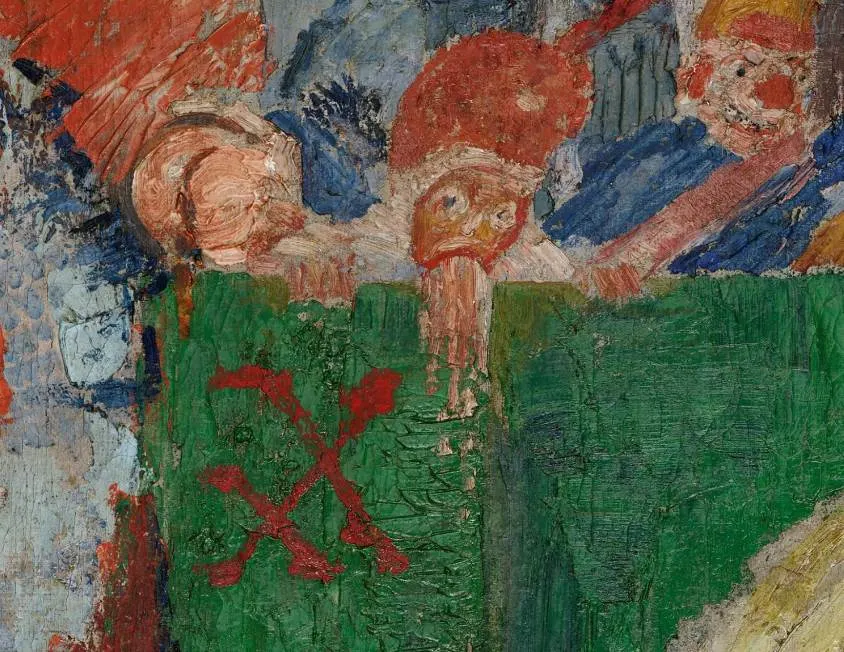
7. The painting was highly influential to Expressionist artists
James sensor wanted to make a mockery of humanity. The dehumanized figures, the chaotic atmosphere, and the figures wearing masks are proof of this notion.
Apart from masks, skeletons were also a central figure in the oeuvre of James Ensor. He included one in the bottom left corner of this work and it became a recurring element in his art.
In this painting, Ensor wanted to highlight the absurdity of the seriousness of humanity. He was inspired by the paintings of Pieter Bruegel the Elder, especially Bruegel’s Procession to Calvary.
All elements combined make this a revolutionary painting of the late 19th century and it served as a great source of inspiration for Expressionist artists of future generations.
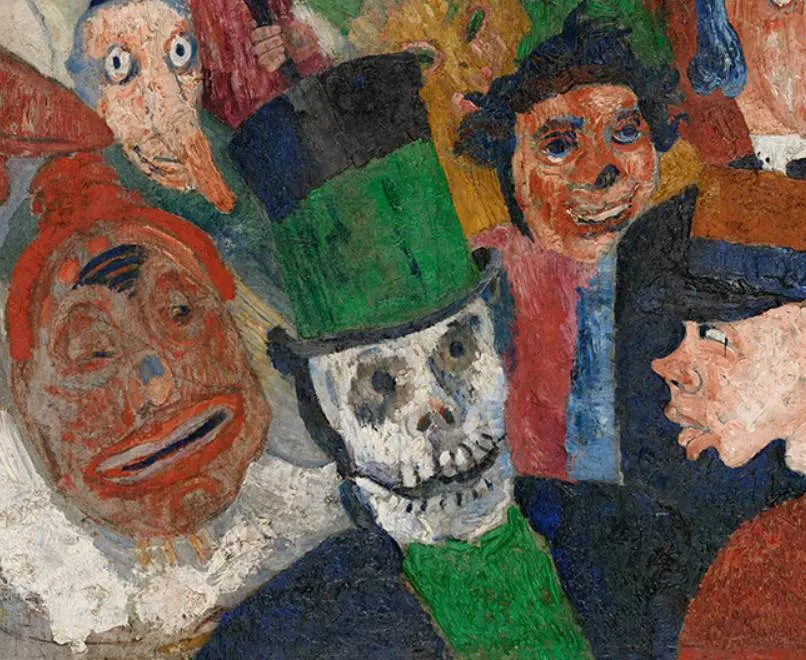
8. The painting technique used by the artist was as complex as the work itself
The painting was completed around the time that George Seurat perfected his Pointillist technique. Ensor’s technique to produce this work was a reaction to it.
He used a combination of brushes, spatulas, and palette knives to apply a thick layer of paint that served as the underdrawing.
He then applied a limited ain’t of pigments to color the predefined space of the underdrawing. He based his work on numerous preparatory drawings.
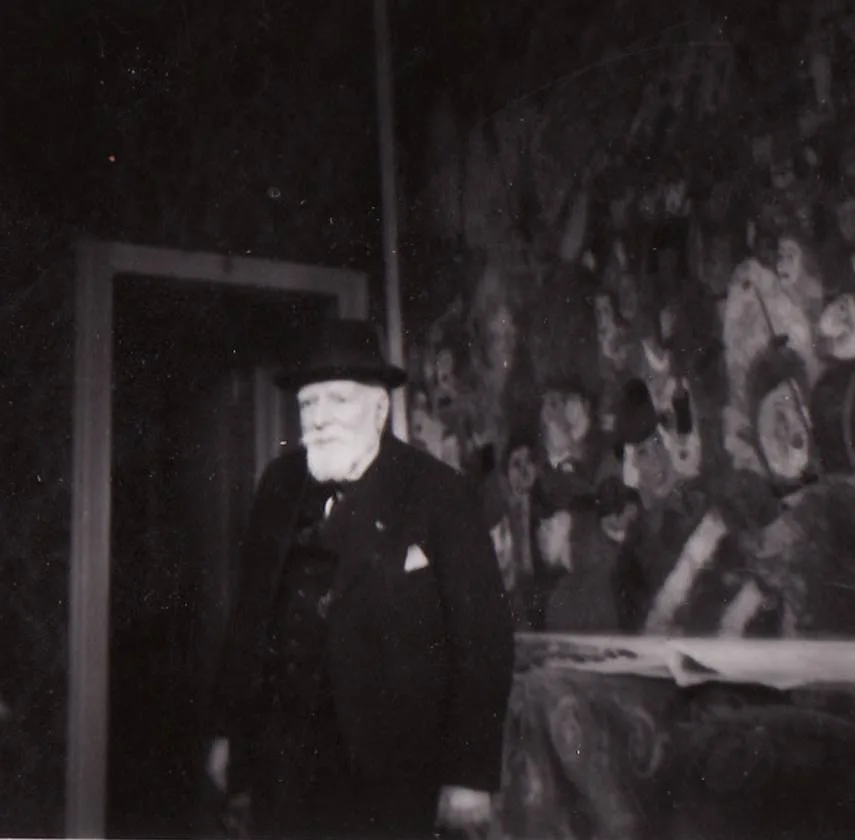
9. How big is Christ’s Entry Into Brussels in 1889 by James Ensor?
The painting was completed in a single piece of linen but it was so big that he had to nail parts of it to the wall of his studio to complete another section.
Christ’s Entry Into Brussels in 1889 is a huge oil on canvas painting that has dimensions of 252.7 × 430.5 centimeters (99.5 × 169.5 inches).
10. Where is the painting located today?
Because it was rejected for the annual exhibition of Les XX? the painting remained in the studio of James Ensor in Ostend on Belgium’s North Sea Coast for multiple decades.
It wasn’t until the year 1929 that it was displayed publicly for the first time at the Centre for Fine Arts in Brussels.
It traveled frequently afterward and was displayed in exhibitions in Belgium and other countries in Europe, as well as the United States.
After Ensor died in 1949, it was acquired by a banker named Louis Franck who sold it to the Getty Museum in Los Angeles for the equivalent of €9 million in 1987.
Despite the outrage in Belgium, the painting moved to LA and is still on public display at the Getty today.

